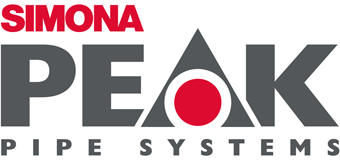To GIS, or not to GIS?
Peak Pipe Systems have obtained formal approval for a comprehensive range of butt-welded fabricated fittings suitable for use on low pressure (LP) and medium pressure (MP) gas networks up to 5.5 bar.
The approval is against the Gas Industry Standard (GIS) GIS/PL2-6:2018. As part of the standard, there is a requirement for third-party verification, in the case of Peak Pipe Systems, this has been completed by BSI under the structure of their Kitemark™ Scheme.
The UK gas industry has spent decades developing the GIS range of documents, indeed they set a benchmark for the global gas industry as they are still referenced extensively around the world.
The Gas Distribution Networks (GDNs) in the UK, including the increasingly influential Independent Gas Transporters (IGTs), on the whole, continue to specify the GIS range of documents as a pre-requisite for product approval for installation or adoption into their respective networks.
But how confident can GDNs & IGTs be that the products in their networks meet the GIS requirements?
Peak Pipe Systems continually listen to their customers – end-users, distributors and other industry experts. Peak’s largest distributor has a dedicated Technical Team who are responsible for ensuring that all gas products distributed by them are fully compliant to GIS – this is a key part of what makes them the UK’s leading supply chain partner for utilities and utility infrastructure providers.
This distributor’s Technical Team is constantly checking that products do not just have a certificate to show GIS compliance but, with the team’s extensive product and technical knowledge, that they truly meet the required standard. Believe it or not – sometimes this is not the case.
The same Technical Team flagged an issue of this nature to all UK gas product suppliers – it related to PE stub flange kits for electrofusion jointing, used extensively for valve and other connections. The stub flange lengths of all apparently GIS ‘approved’ suppliers did not meet the minimum length as defined in GIS/PL2-6:2018, Table 4. This might have just been a technicality to some, but the distributor’s Technical Team realised this was more important as it meant that the installer could not actually clamp the electrofusion coupling properly and would therefore be forced to ‘improvise’ and build unnecessary risk into the network.
As a key manufacturing partner of their largest distributor, it was Peak Pipe Systems that reacted to the problem, they developed an extended stub flange product range and went through full GIS approval with the support of BSI. The final sign off was with the distributor’s Technical Team.
Peak Pipe Systems are now offering the UK gas industry a fully compliant range of stub flanges and a wider range of butt-welded fabricated fittings suitable for use on low pressure (LP) and medium pressure (MP) gas networks up to 5.5 bar.
So, back to the question …… “To GIS, or not to GIS?”.
Yes – but only if you buy your products from one of Peak Pipe System’s distributors.
